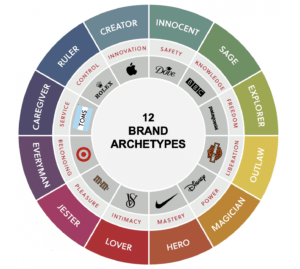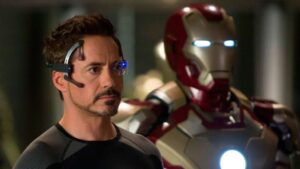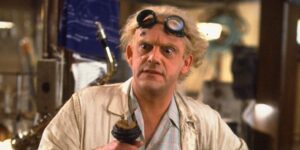I wouldn’t call myself a Hollywood film buff. And I don’t follow the Instagram feeds of any movie stars.
But there is one star who I do (secretly) admire.
Tom Hanks.
Sure, he doesn’t have the sophisticated good-looks of George Clooney. The action-movie physique of Dwayne ‘The Rock’ Johnson. The suave, bond-esque-style of Sean Connery. The elegant presence of Cate Blanchett. Or even the laugh-out-loud humour of Adam Sandler.
But here’s what he does have: a genuine, sincere kindness. Put simply, he just seems like a good, honest guy.
That may not seem like such an impressive quality at first glance. But in the often narcissistic, and sometimes downright self-destructive, world of Hollywood, it stands out like a Shag on a rock (not quite sure what that phrase means, but it certainly sounds conspicuous…).
And in case you think that might just be his movie persona – and not his real personality – check out this NY Times article. He’s widely considered ‘the nicest guy in Hollywood’.
But let’s back up for a minute. Why am I telling you this? And what on earth does it have to do with boosting ecommerce sales?
You see, we all (should?) know that to attract customers who are willing to pay premium prices for our products or services, we need to differentiate our business in some meaningful way. We need to stand out by being unique, different and better in some relevant respect. If we’re not, why should anyone buy from us over the competition?
This is critical for any business, but especially for ecommerce businesses, who often rely on their website to do the heavy lifting in terms of converting prospects into customers. If their site doesn’t clearly convey why someone should buy their product over others, they’re dead in the water. Low conversion rates lead to expensive advertising, which equals meagre profits.
That’s why the best businesses craft a compelling differentiation strategy. Here’s what that means:
If you’ve answered those 4 questions for your business, and the answers are reflected in your marketing and on your website, you’re well on your way to standing out from the crowd.
But let me let you in on a little secret: Boosting your conversion rate, especially for ecommerce businesses, requires an extra step.
Have you noticed that there are some brands with which you connect more than others? Perhaps you feel a certain affinity (and loyalty) that you can’t easily explain?
Often, it’s because they’re using another type of differentiator – one that has nothing to do with their product quality, performance, money-back guarantee, or any other specific feature or benefit they offer.
At the risk of sounding dramatic, they’ve managed to ‘hack your mind’ by leveraging the science of brand archetypes.
You see, we all have a set of basic human drives that motivate our behaviour, including:
And because we’re all different, each of us is motivated more by some of these drives than by others. I might be driven by belonging, while you might be motivated by mastery.
Now, stay with me here because this is critical. Personality types will appeal more to us if they align with our core drives. For example, if safety is extremely important to me, I might resonate more with an honest, innocent, kind personality type, rather than, say, an adventurous, powerful or controlling one. On the other hand, if I’m into liberation and freedom, I might be drawn to a more carefree, free-spirited personality.
What does all this mean for marketing? It means that if you want to resonate with your target market, your brand needs to embody a ‘personality’ that aligns with their unique drives. And when you do, you won’t just be a commodity; you’ll create a far deeper connection with your customers.
In fact, this is the heart – and the secret – of real branding. Branding isn’t about your logo or colour scheme or your website design. Those are important ‘expressions’ of your brand. But your brand itself runs much deeper: It’s who you are. It’s your personality. It’s how you think, feel and act.
Which is why the best brands in the world – the ones that elicit fanatical brand loyalty – embody a distinct ‘personality’ that truly resonates with their target market.
And that’s precisely where the concept of brand archetypes comes in.
Ever heard of Swiss Psychiatrist Carl Jung (one-time student of Sigmun Freud)? In his theory of the human psyche, Jung identified 12 universal personality ‘archetypes’ that reside in our collective unconscious and reflect the range of basic human drives.
What’s interesting for businesses is that each of us tends to have one archetype that dominates our personality. Which means that if our business can tap into the archetype that best resonates with the drives and personality of our target market, we’ll build a deep level of connection that’s hard to replicate. That’s why Margaret Mark and Carol Pearson in their bestseller “The Hero and the Outlaw: Building Extraordinary Brands Through the Power of Archetypes” explain that “[a]rchetypes are the heartbeat of a brand because they convey a meaning that makes customers relate to a product as if it actually were alive in some way, they have a relationship with it and care about it.”
Drawing on Jung’s research, here’s a diagram depicting the 12 archetypes and the basic human drives they reflect. Which archetype resonates most with you?

Let’s explore a few of these archetypes together, with some illustrations to bring them to life.
Take the Jester archetype for example. The Jester is driven by experiencing pleasure, enjoyment and fun. They want to have a great time and lighten up others too. Which is why you’ll find them playing, joking around and generally being funny.
Think Jim Cary.

Or Adam Sandler.

What’s powerful about this persona from a branding perspective is that even if you’re not a full-blown Jester personality, everyone likes to laugh. So if you’re in the entertainment business or you want to associate your brand with fun and good times, the Jester personality can be a memorable point of differentiation. By way of example, think Old Spice, Dollar Shave Club and Bundaberg Rum.
If you haven’t already seen it, check out the Dollar Shave Club ad. It went viral for a reason.
Another archetype is the Creator. The Creator’s desire is to innovate, to create something of value that didn’t previously exist. They need to express their unique talent to bring their vision to life.
Think of the artistic genius Mozart (as portrayed in Armadeus).

Or master-tinkerer Tony Stark from Iron Man.

Or the inventor, Emmett Brown (Doc), from Back to the Future.

This archetype is popular among art, design, technology, and marketing brands. Their products and services empower their customers to be creative. They foster their imagination and self-expression by celebrating the creative process. Brands like Apple, Lego and Adobe (with their suite of design products like PhotoShop, InDesign and Premier) epitomise this archetype.
Watch the ad that launched Apple’s classic ‘Think Different’ campaign:
Or Lego’s ‘inspire imagination and keep building’ commercial:
One more example is The Everyman archetype (or Everyperson, to be more accurate) .
This personality has a deep desire to belong. They don’t seek attention. They’re not trying to stand out. They’re just friendly, honest, humble, relatable, genuine people who want to be part of the group, like everyone else. And in wanting to belong and get along with others, they treat everyone with dignity and respect.
And this of course is where Tom Hanks comes in. He embodies the all-round nice guy persona. He’s the person-next-door you can rely on, talk to and trust to have your back.

This archetype is often used by brands that relate to everyday activities – like home or family life. Through honest, humble, friendly and down-to-earth communication that doesn’t exclude, these brands make people feel a sense of belonging and acceptance. IKEA, Levi’s or Target are prominent examples of this archetype. For instance, IKEA makes quality, simple, affordable household furniture that’s available to everyone. Indeed, their mission is to provide quality to everyone, regardless of whether they’re a CEO or a cashier; everyone gets exactly the same treatment. Levi’s is no different: everyone gets great quality jeans. And Target’s ‘everyday low prices’ means that no-one is excluded; they’re accessible to everyone.
Check out this Ikea commercial to see how its powerful messaging relates to the average person:
As we said, if you don’t want to be just another commodity forced to compete on differentiators like price, benefits and features, you’ll need to connect with your target market on a deeper level. And for that, your brand needs a real, fully-formed personality – embodied in an archetype.
But it’s not enough to simply choose an archetype. You’ll need to map out the full breadth of your brand personality, with a clear outlook on life, beliefs about the world, a unique tone of voice, visual identity, and so on. Only the creation of that kind of full-fledged personality will enable you to build connection with the authenticity and humanity of a real person.
How do you do it? You’ll need to consider the following 6 components:
Once you’ve mapped out your personality in detail, it’s time to put your brand to work. Which means applying the 6 points above to every touch-point in the customer journey: from your website and packaging to your social media and sales process. Often people start (and end!) their branding with these components. Yet, as you can see, they’re actually the last step in the process and should give full expression to a clear, authentic personality that deeply resonates with your target market.
And when you do that, you’ll be much more likely to build customer connection, loyalty and of course sales.
Oh and in case you’re wondering which brand personality Digital Autopilot aligns with…
Well, we’re hell-bent on supporting the average Aussie business owner who’s just trying to grow their business to sustain themselves and their family. And we do it with down-to-earth honesty and genuine care.
Which means we’re for Everyman (or every-business), just like Tom Hanks.